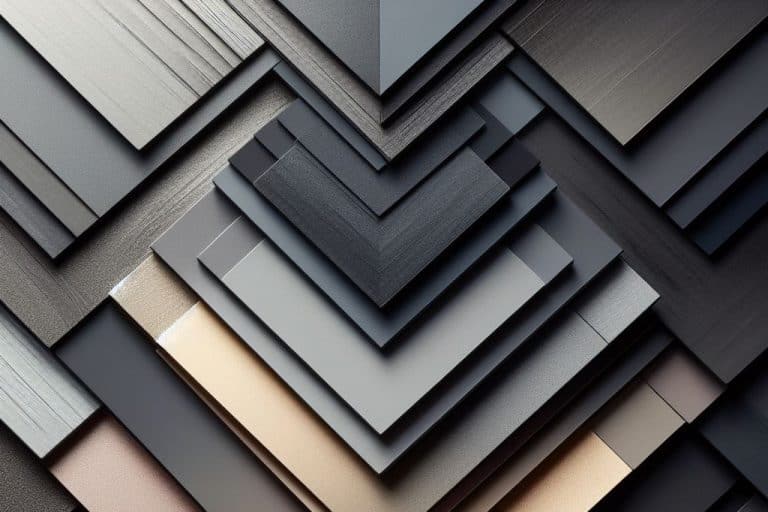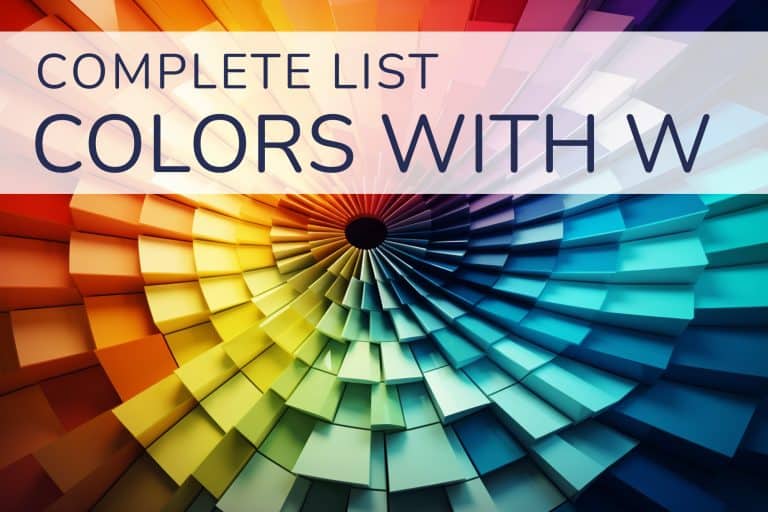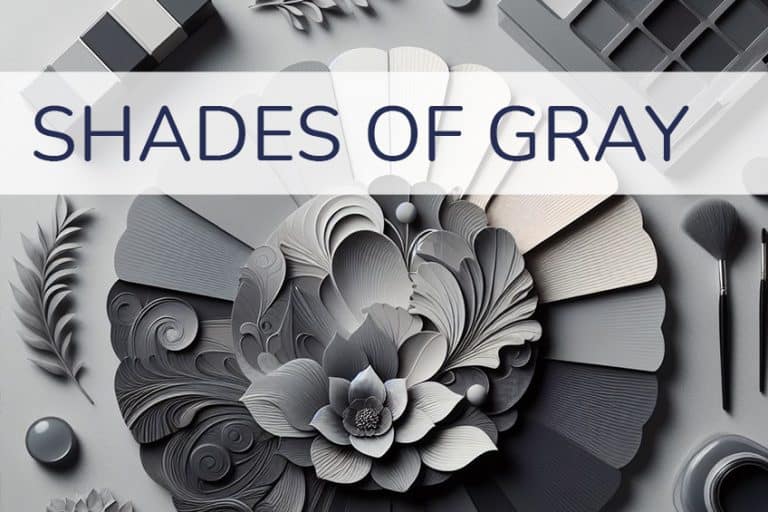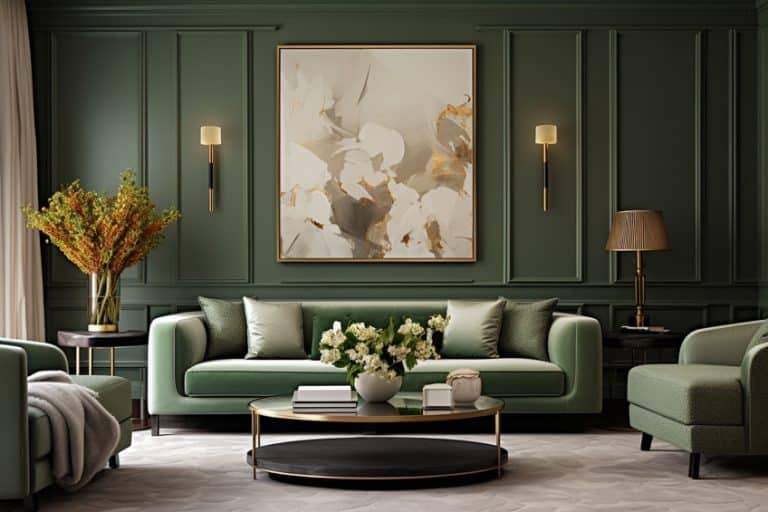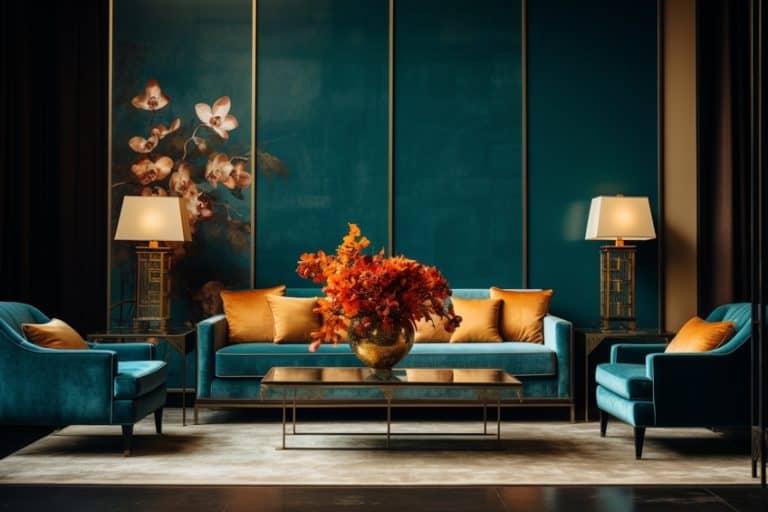What Colors Make Gold? – Detailed Guide with Mixing Ratios
The color of money, opulence, and luxury, gold is a wonderful color to have as part of your painting palette. It can, however, be tricky to mix your own gold paint. Whether you add a glittery sheen, or you simply want to create a golden hue, you can find everything that you need to know in this gold mixing article. So what colors make gold? Join us as we explore the psychology of gold and the methods that you can use if you want to know how to mix gold paint.
How to Mix Gold
When it comes to what colors make gold paint, many artists may hit a stumbling block with the sheen. It is relatively easy to learn how to mix gold paint from other colors, but when it comes to painting gold with a sheen, we need to be a little more creative. By the way, you can try out as many color mixes as you want with our free online color mixer.
Method One: Ochre Brown and Yellow
In this first method, we are going to answer the question of what two colors make gold. The two colors that you can combine to create a beautiful warm gold shade are yellow and brown. Because gold is typically on the warmer side of the color spectrum, you are going to want to use a warm yellow and a warm brown. Brown is quite a neutral color, but if you read our article on the different shades of brown, you will see that there is a lot of possible variation in the shade. To create a beautiful warm gold shade, we recommend using these two shades:
- Brown ochre
- School bus yellow

| Shade | Hex Code | CMYK Color Code | RGB Color Code | Color |
| Ochre Brown | #CC7722 | 0, 42, 83, 20 | 204, 119, 34 |
| Shade | Hex Code | CMYK Color Code | RGB Color Code | Color |
| School Bus Yellow | #FFD800 | 0, 15.3, 100, 0 | 255, 216, 0 |
For a basic gold shade, you can simply combine equal parts of each of these shades. The resulting shade is relatively basic, and depending on the exact tone you want you can adjust the ratios. A little more yellow will create a brighter and more vibrant gold shade, while more brown will result in a darker and more muted golden color.
Following the second method for how to make the color gold, we give you some of the best ways to adjust the tone of your gold.
Method Two: Blue, Red and Yellow
The second method for how to mix gold paint involves using a combination of all three primary hues. This method is basically a more in-depth and extended way to achieve the same results as the first method. Instead of simply mixing a yellow shade with a brown shade, you are going to make the brown shade first by combining all three primary shades:
- 1 Part of Cobalt blue
- 1 Part of Coquelicot red
- 4 Parts of School bus yellow

| Shade | Hex Code | CMYK Color Code | RGB Color Code | Color |
| Cobalt Blue | #0047AB | 0, 15.3, 100, 0 | 60, 60, 0, 0 |
| Shade | Hex Code | CMYK Color Code | RGB Color Code | Color |
| Coquelicot Red | #FF3800 | 0, 78, 100, 0 | 100, 22, 0 |
| Shade | Hex Code | CMYK Color Code | RGB Color Code | Color |
| School Bus Yellow | #FFD800 | 0, 15.3, 100, 0 | 255, 216, 0 |
Equal parts of these three warm primary hues will create a lovely warm brown similar to the ochre brown used in the first method. When you are happy with your brown shade, you can simply add an equal amount of the school bus yellow to create a lovely vibrant golden color.
How to Mix Different Shades of Gold
Here are more mixing recipes to create all sorts of gold in an overview table.
| Color Visualization | Gold Color Shade | Color Recipe |
|---|---|---|
| Classic Gold | 2 parts yellow + 1 part brown | |
| Rose Gold | 2 parts gold + 1 part pink | |
| Old Gold | 2 parts yellow + 1 part Olive | |
| Metallic Gold | 3 parts yellow + 1 part Light brown + A touch of silver | |
| Pale Gold | 3 parts yellow + 1 part white | |
| Satin Gold | 2 parts yellow + 1 part Light orange + A touch of brown | |
| Antique Gold | 2 parts yellow + 1 part Dark brown | |
| Bronze Gold | 2 parts brown + 1 part yellow | |
| Copper Gold | 2 parts orange + 1 part brown | |
| Sunshine Gold | 4 parts yellow + 1 part Light green | |
| Ivory Gold | 3 parts white + 1 part yellow | |
| Tan Gold | 2 parts brown + 1 part yellow + A touch of white | |
| Green Gold | 2 parts yellow + 1 part green | |
| Blush Gold | 3 parts pink + 1 part gold | |
| Bronzed Gold | 2 parts brown + 1 part orange + A touch of yellow |
Understanding Color Bias
Color bias is a relatively easy concept to understand within the framework of traditional color theory. Almost everyone is familiar with the fundamentals of traditional color theory. Primary shades form the basis of all other colors, and colors that sit across from each other on the wheel are said to be complements. Compared to these theoretical basics, color bias is slightly less well-known. Once you are aware of color bias, however, you can easily mix a wide range of different colors with ease.
When we speak about color bias, we are really discussing the relative temperature of a color. Colors range between very warm (with red being the warmest) and very cool (with blue being the coolest). Which way a color leans on this scale, determines its color bias.
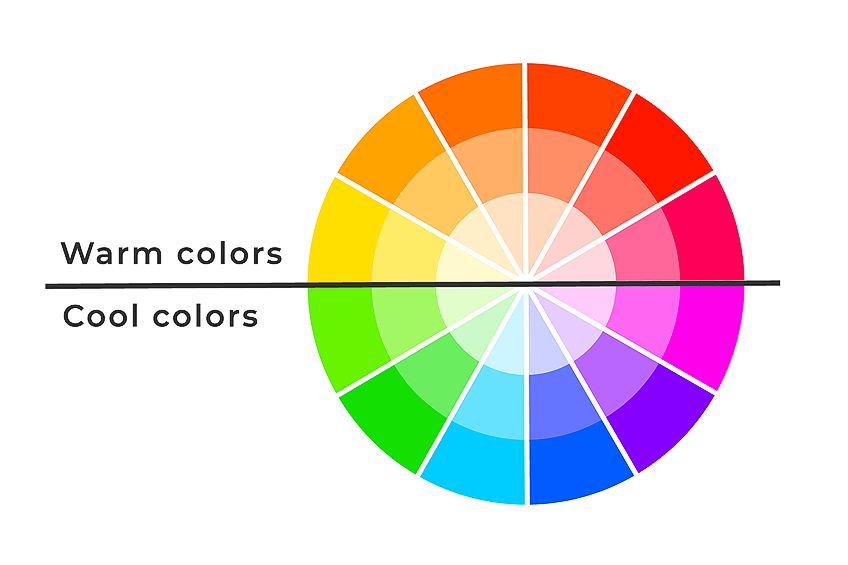
For example, a yellow that is said to be warm will have a red color bias. In other words, the yellow shade has a touch of red in it, which makes it appear closer to orange and this is a visibly warm shade. A cooler yellow, on the other hand, will lean more towards blue and will therefore appear slightly more green.
Understanding color bias is essential when it comes to mixing your own colored paint.
You are probably aware that a combination of all three primary hues will result in a muted brown shade. As such, if you want to mix a bright and vibrant shade using two primary shades, you need to take into consideration their color bias. Creating a green shade from a warm yellow that contains a touch of red and a cool blue will result in a muddy green shade because you have inadvertently combined all three primary shades.
If you want to know how to make the color gold warm and vibrant, you will need to use two warm base colors that both lean towards red. If you want to know how to make golden colors cooler, then you will need to ensure both of your bases are cooler and lean towards blue. You can also have a look in our color mixing guide.

Adjusting the Tone of Your Gold Paint
The two methods for how to make gold paint that we have just outlined tend to produce a single shade of gold. When it comes to using any color realistically in a painting, we always need to have a few different tones. In this section, we are going to outline some easy methods that you can use to adjust your gold to create a diverse palette.
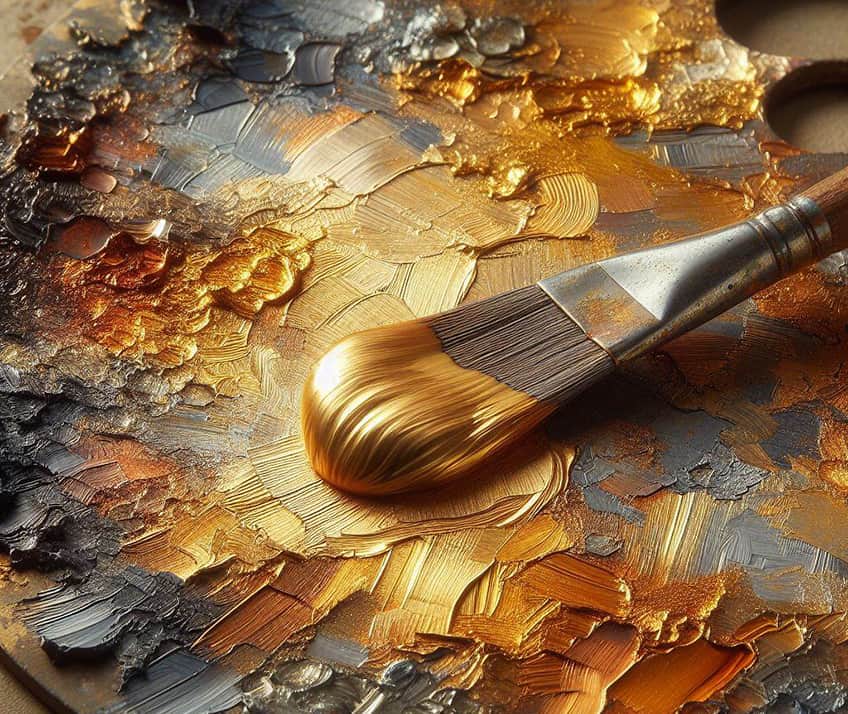
How to Make the Color Gold Lighter
Adjusting the tone of your gold to make it lighter is very easy, and there are two different options that you can use. You can either use a touch of white paint or add a little more yellow to lighten your gold color. White is the most common shade used to lighten the tone of many different colors. Using a touch of white is a great way to brighten up color, but it does come with its drawbacks.
The first thing to note is that white has a habit of muting a color while lightening the tone.
As a result, your gold may be slightly less vibrant if you choose to lighten it with white. The second factor to be aware of when using white to lighten your gold color is that you only need a very small amount. It is very easy to add too much white, so take it slowly.
The second, and in our opinion, preferable method for lightening the tone of your gold color is to simply add a little more yellow. Because you are already using yellow as one of the base colors in your gold paint, you can add more without changing the vibrancy of your shade. Try adding a splash more yellow to your gold, and you will be surprised how bright and vibrant your gold can get.
How to Make the Color Gold Darker
When it comes to the question of how to make gold paint darker, the answer depends on the final color you want to achieve. If you want to maintain the temperature of your gold hue, then we suggest simply adjusting your ratio of brown and yellow. In the same way that a little more yellow will make your gold shade lighter, a little more brown will make it darker.
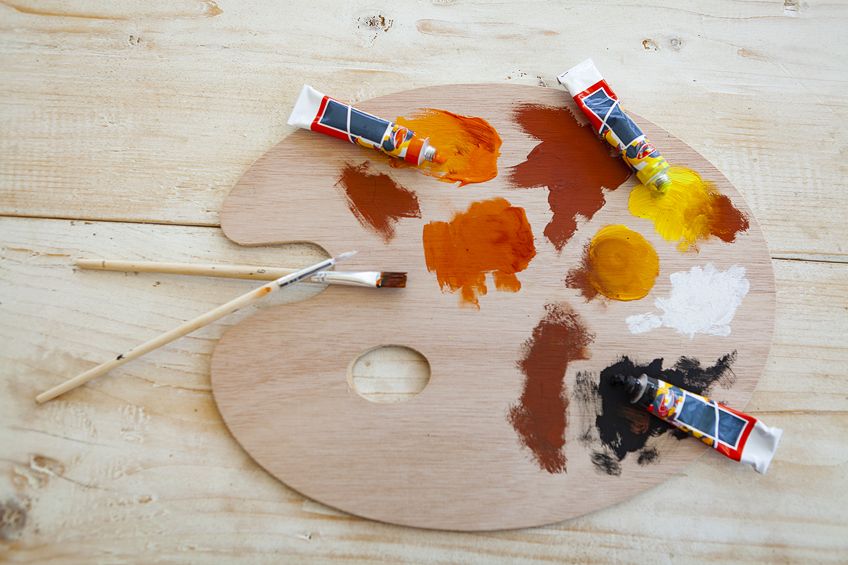
Our second suggestion depends on whether you want to also adjust the temperature of your golden shade. If you want to make your gold warmer and darker, you can try adding a deep warm orange shade to your gold paint. The best way to learn how to make the color gold darker is to experiment with all the paints that you have in your collection.
How to Make Gold Paint Shine
Gold is known for its luster and shine, but the combinations of paint shades that we have used so far in this tutorial to make gold do not have that signature glow. Adding sheen to your gold paint is very easy and it can quickly make your painting jump off of the canvas.
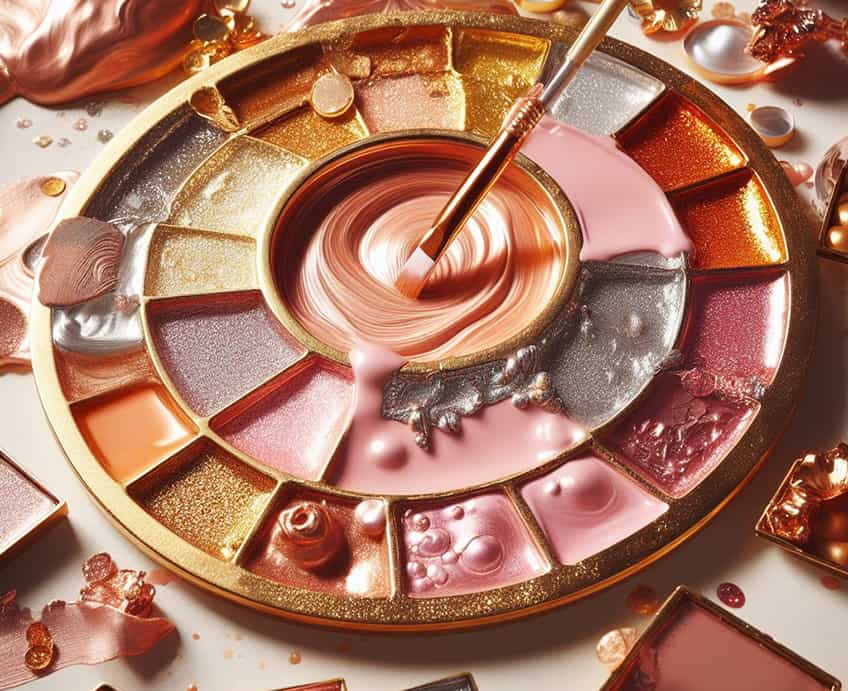
All you need to add a sparkle to your gold paint is some gold luster powder. You can find gold glitter powders at most art and craft stores, and it is a brilliant way to level up your gold paint.
Different Shades of Gold
What color is gold? As with all colors, there are many different possible shades of gold. The final golden shade is determined by the relative temperature of your base colors, whether you added a touch of pink, or whether you want a lighter or darker tone. In the table below, you will find a list of some of the most popular gold shades with their Hex numbers and RGB codes.
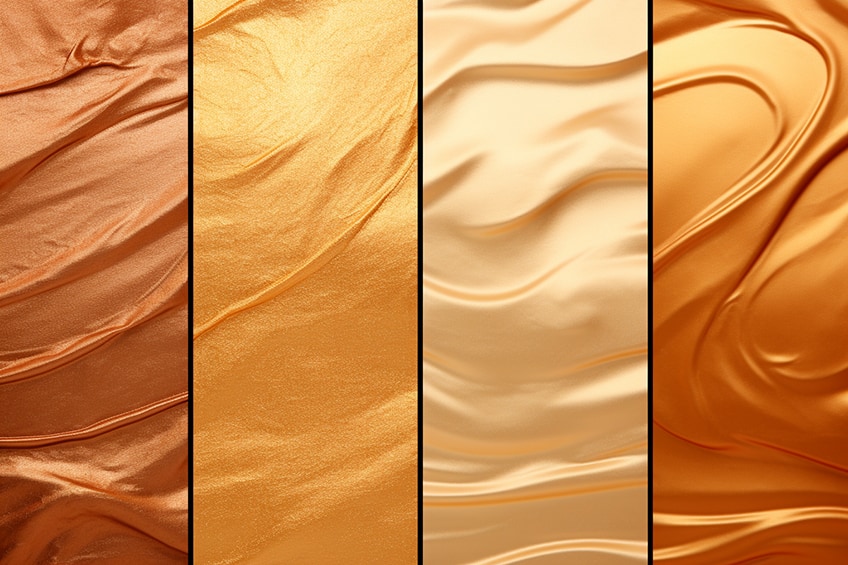
| Gold Shade | Hex # | RGB Code | Color |
| Light Golden Rod | #FAFAD2 | 250,250,210 | |
| Pale Golden Rod | #EEE8AA | 238,232,170 | |
| Khaki Gold | #F0E68C | 240,230,140 | |
| Vegas Gold | #C5B358 | 197,179,88 | |
| Old Gold | #CFB53B | 207,181,59 | |
| Metallic Gold | #D4AF37 | 212,175,55 | |
| Golden Yellow | #FFDF00 | 255,223,0 | |
| Gold | #FFD700 | 255,215,0 | |
| Golden Rod | #DAA520 | 218,165,32 | |
| Orange Gold | #FFA500 | 255,165,0 | |
| Dark Orange Gold | #FF8C00 | 255,140,0 | |
| Chocolate Gold | #D2691E | 210,105,30 | |
| Sienna Gold | #A0522D | 139,69,19 | |
| Saddle Brown Gold | #8B4513 | 139,69,19 | |
| Golden Brown | #996515 | 153,101,21 | |
| Peru Gold | #CD853F | 205,133,63 | |
| Pale Gold | #E6BE8A | 230,190,138 |
From this table, you should be able to see just how many different variations are possible within the gold color family.
How to Make the Color Gold Pop in Your Paintings
Now that you know how to make golden color paint, it is time to discuss how to get the most out of this beautiful color. The trick to making a color work in different ways within a painting lies in the colors you use around it. You can make your gold brighter, duller, or richer by using it alongside different complementary and analogous colors.

How to Make Your Golden Color Neutral
If you do not want your gold to stand out too much in your painting, the trick is to use it as a neutral base. The bright and glittering gold color is going to struggle to take a background role, so you need to adjust the tone of your gold paint. To tone down your gold paint, you can add a little more brown or a touch of gray. This method will result in a neutral-looking gold color that does not attract too much attention.
How to Make Your Golden Color the Accent
In many instances, you want your gold to take center stage in your painting. Gold is most often used as an accent color to draw the attention of the eye to a particular feature of a painting. The accent role is what gold was born for because it naturally attracts our eyes. To make your gold as eye-catching as possible, you want it to be bright and preferably glittering.
You can make your gold brighter by adding more yellow or white, and you can create a metallic sheen by adding some gold luster powder to your paint.
How to Make Your Golden Color Richer
You have your final, beautiful, and glowing golden shade but now you want to know how to make it look even richer in your painting. The best way to make your gold paint appear richer is to use it alongside colors that make it pop.
Using a Base Color
One of the best ways to make your gold paint appear richer without using it alongside other colors is to use a base color beneath your gold. Red is the best base color to use because it emphasizes the rich tones of your gold paint. Simply paint the area red, leave it to dry, and then paint your gold over it. Try this method out, we guarantee you will be surprised by what a difference this technique makes to your gold shade.
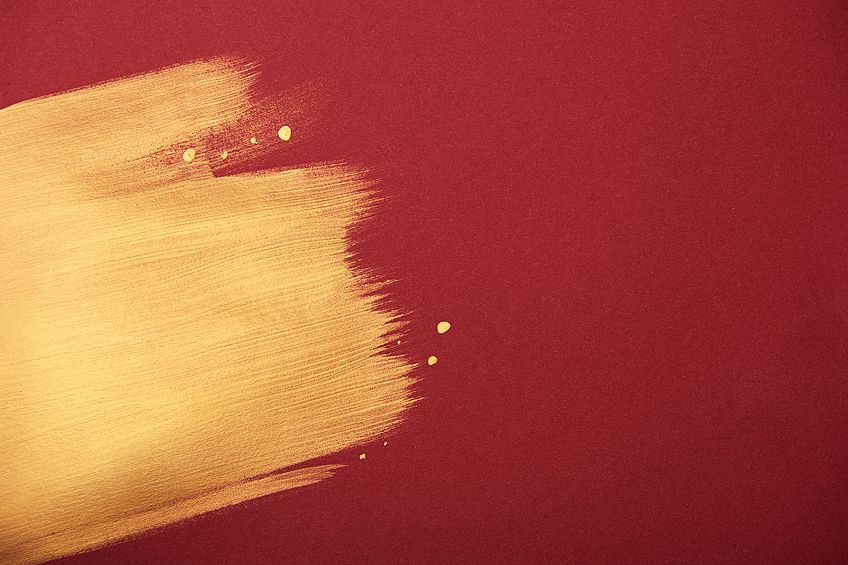
Using Analogous Colors
Analogous colors are the opposite of complementing shades. These are colors that share similarities in tone and warmth to the original shade. In the case of gold, the analogous shades are oranges, reds, and warm yellows. Using analogous colors in a painting is a fantastic way to infuse it with vibrant energy, but it is important to be aware that too many bright warm shades can become overwhelming quickly.
Our top tips are to make sure that the analogous colors that you use alongside your gold shade are slightly more neutral.
A muted red hue will make your gold gleam even more, but a bright and vibrant red can blend into the shade too much. Although yellow is technically an analogous shade for gold, it is best not to use these two shades together in a painting. Yellow is simply too similar to gold, and the two colors will blend into each other, preventing the gold from shining brightly.
Using Complementary Colors
Another way to make your gold pop in a painting is to use it alongside complementing colors. Because gold is typically a warm color, using it alongside a cool complement is a great way to create a rich and dynamic effect. The two best complementary options are blue and purple, but with gold purple is the definite front-runner.
When you are using gold alongside one of these complementing shades, it is important to be aware of the relationship between light and dark shades. When paired together, darker colors tend to recede and the lighter hues will come forward.
As such, if you were to use gold to outline a block of purple or blue, the complement color will appear to sink backward while the gold pops forward. In addition, using blue or purple to outline an area of gold paint will accentuate the brightness of the gold and make it leap off the canvas.
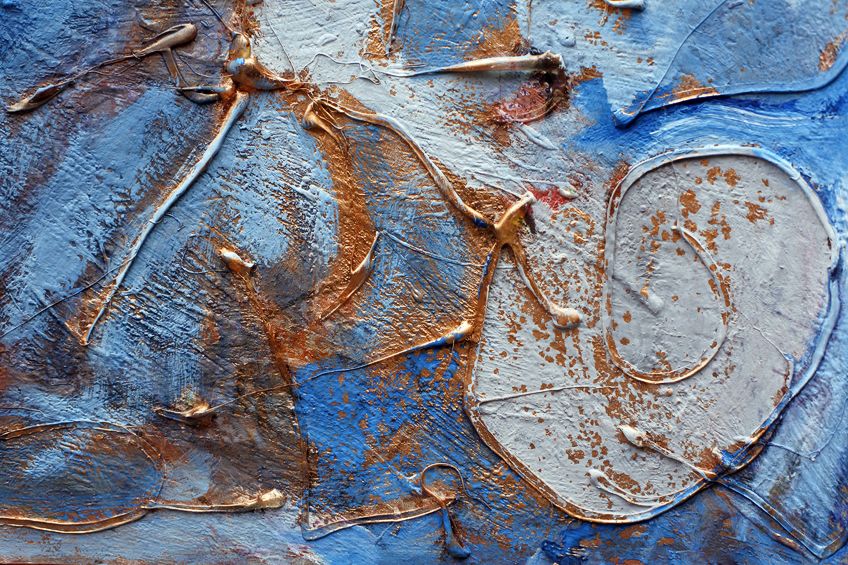
Using Neutral Colors
The final way that you can increase the brilliance of your golden color is to use it alongside some neutral shades. Neutral colors are those without an obvious color temperature and they tend to be supporting colors rather than the star of the show. Brown and gray are wonderful colors to use alongside gold because their lack of vibrancy only increases the glimmer of the gold.
Although not technically a neutral shade, black is another great color to use with your gold. The darkness of black really makes the gold pop, particularly if your gold has a beautiful glittery sheen. You also want to make sure that your gold is bright and vibrant when using it with black, as a muted and metallic gold can appear a little muddy alongside black.
A Closer Look at Gold Color
Named after perhaps the most prized metal around the world, the color gold is one of the most obvious symbols of wealth and prosperity. Across cultures and historical periods, gold is always highly valued. As money and jewelry, gold always makes a good impression, and people always want to have it and wear it. Not only is gold a symbol of wealth and luxury, but it also has a range of interesting religious and cultural meanings.
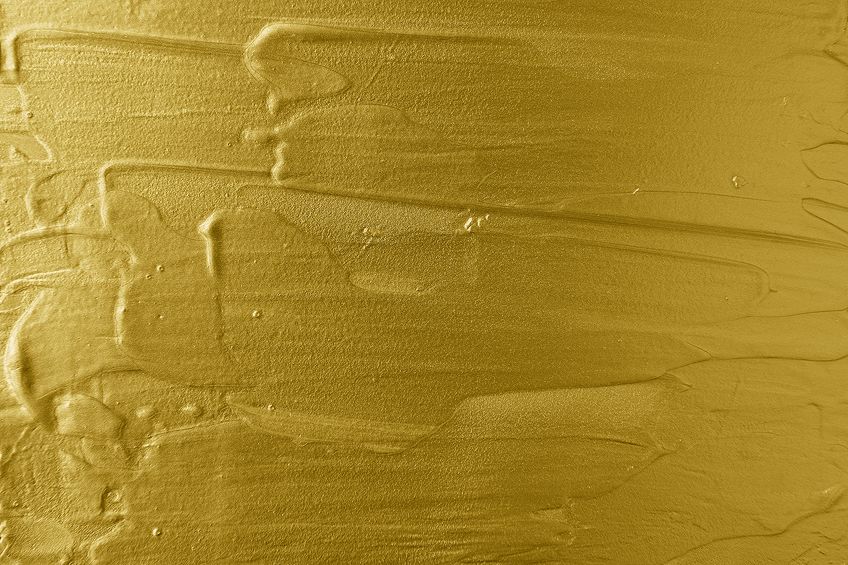
Gold and Religion
The gold color is used widely in many different religious settings. Synonymous with power and divinity, gold is often used in depictions of religious icons. Gold features heavily in many Christian mosaics, reminding them of the omnipresence and power of their God. For Hindu practitioners, gold is a color of self-led improvement, meditation, and knowledge. Many of the Hindu gods are depicted with haloes of gold around their heads, emphasizing their endless virtue and wisdom.
Gold and Culture
As with all objects of meaning in our world, gold has different connotations in different cultural settings. Europeans for example, view gold as a color of religious or spiritual enlightenment and solidarity, while gold is often associated with seafaring by the people of Cuba and Jamaica. Many Southern American cultures associate gold with the church and religion.
In North America and Canada, gold is normally portrayed as a color of hard work, affluence, and luxury, although these cultures also associate too much gold with overindulgence and cockiness.
Gold and Success
The color gold is globally viewed as a color of success and winning. From Olympic gold medals to the financial success shown through items of gold, the color gold represents those who have tried and championed in their chosen field. As a result of this winning association, many superstitious people see the color gold as a symbol of luck and prosperity.

Gold is a wonderful color to use in painting and design because it is incredibly eye-catching and carries a sense of luxury, warmth, and richness. Buying pre-made gold shades may be necessary if you do not have the time to mix them yourself, but there is so much more variety available to you when you know how to make gold paint yourself.
Frequently Asked Questions
What Colors Make Rose Gold?
It is relatively easy to make rose gold using three colors. The best way to make rose gold is to simply add a touch of pink to your gold shade. You can also make rose gold by combining red, gold, and silver paint.
What Color Is Gold?
Gold is part of the yellow family of colors. Depending on the exact tone of a golden shade, gold can also belong to the brown color family.
What Two Colors Make Gold?
Making gold paint is actually very simple. All you need is a warm shade of yellow and a light, warm shade of brown paint. For that extra sparkle, you can add a touch of gold glitter powder to your paint mixture.
In 2005, Charlene completed her Wellness Diplomas in Therapeutic Aromatherapy and Reflexology from the International School of Reflexology and Meridian Therapy. She worked for a company offering corporate wellness programs for a couple of years, before opening up her own therapy practice. It was in 2015 that a friend, who was a digital marketer, asked her to join her company as a content creator, and this is where she found her excitement for writing.
Since joining the content writing world, she has gained a lot of experience over the years writing on a diverse selection of topics, from beauty, health, wellness, travel, and more. Due to various circumstances, she had to close her therapy practice and is now a full-time freelance writer. Being a creative person, she could not pass up the opportunity to contribute to the Art in Context team, where is was in her element, writing about a variety of art and craft topics. Contributing articles for over three years now, her knowledge in this area has grown, and she has gotten to explore her creativity and improve her research and writing skills.
Charlene Lewis has been working for artincontext.org since the relaunch in 2020. She is an experienced writer and mainly focuses on the topics of color theory, painting and drawing.
Learn more about Charlene Lewis and the Art in Context Team.
Cite this Article
Charlene, Lewis, “What Colors Make Gold? – Detailed Guide with Mixing Ratios.” Art in Context. July 28, 2021. URL: https://artincontext.org/what-colors-make-gold/
Lewis, C. (2021, 28 July). What Colors Make Gold? – Detailed Guide with Mixing Ratios. Art in Context. https://artincontext.org/what-colors-make-gold/
Lewis, Charlene. “What Colors Make Gold? – Detailed Guide with Mixing Ratios.” Art in Context, July 28, 2021. https://artincontext.org/what-colors-make-gold/.




